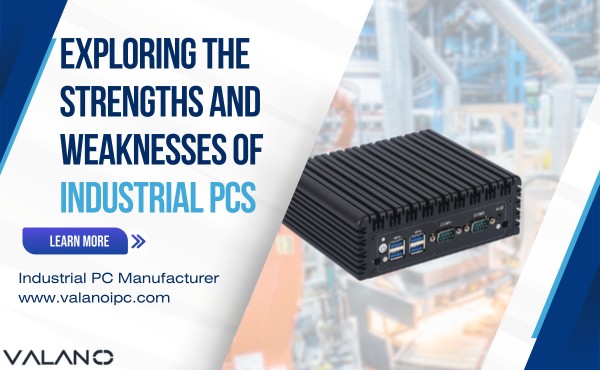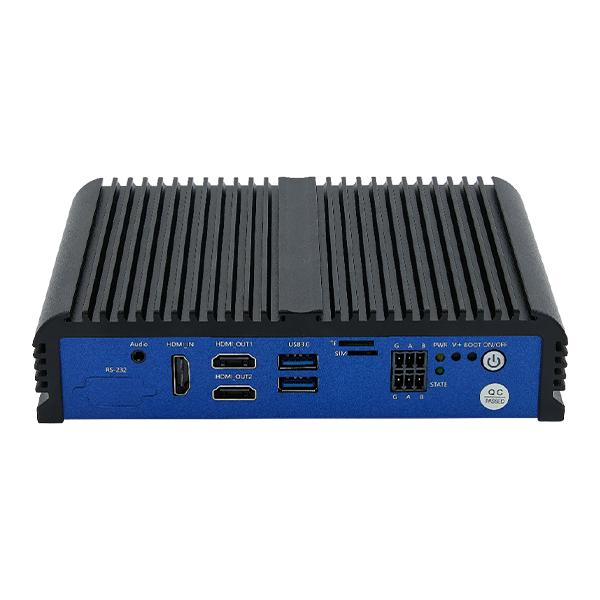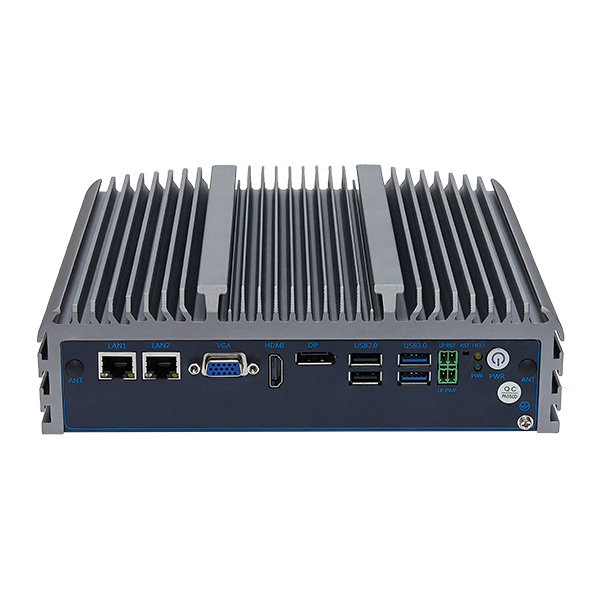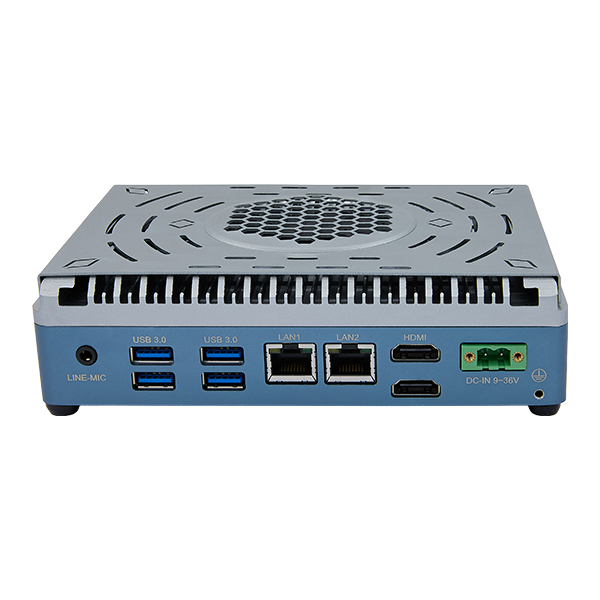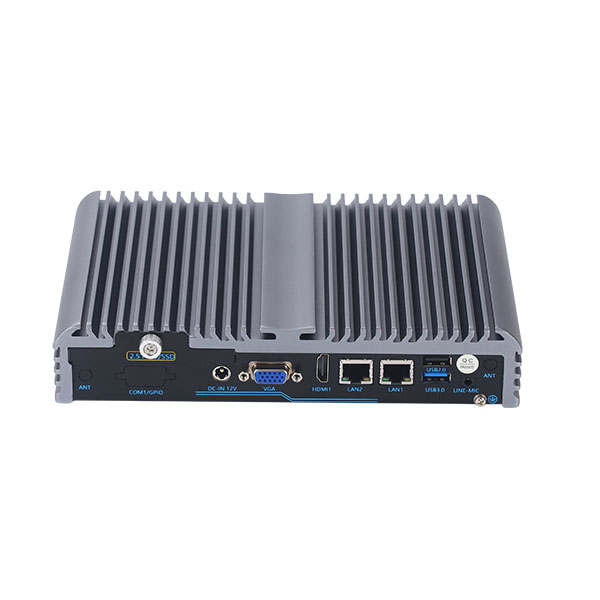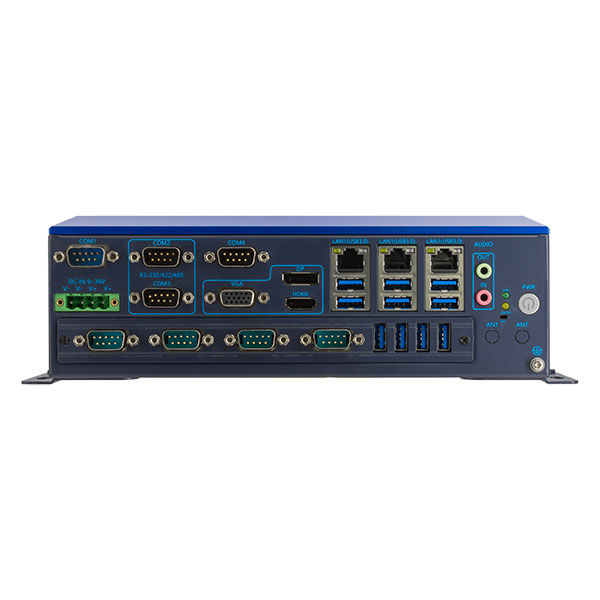
When choosing between a Fanless Industrial PC and a Fanned Industrial PC, it’s crucial to consider several factors, such as cooling efficiency, noise levels, energy consumption, and how well the system integrates into its operating environment. Fanless Industrial PCs use passive cooling for silent, energy-efficient operation, making them ideal for quiet, dust-sensitive environments. On the other hand, fanned systems offer superior cooling for high-performance tasks but are often louder due to moving parts. The right choice depends on your specific needs in terms of durability, performance, and operating conditions.
Key Takeaways
Fanless Industrial PCs are silent, energy-efficient, and ideal for environments like hospitals or libraries where noise reduction and dust resistance are critical.
Fanned Industrial PCs offer superior cooling for high-performance tasks, such as gaming or data processing, but may be noisy.
Fanless PCs are great for low-power, long-term use in clean, quiet settings, while fanned PCs excel in high-demand, high-temperature environments.
Overview of Fanless and Fanned Industrial PCs
A Fanless Industrial PC operates without fans, relying on passive cooling systems that use heatsinks, copper heat pipes, and thermal adhesives to dissipate heat. Key components include:
Aluminum Heatsink Chassis: Provides robust protection while effectively dissipating heat.
Copper Heat Pipes: Efficiently transfer heat from the CPU to the chassis.
Thermal Adhesives: Facilitate heat distribution across critical components.
This fanless design eliminates moving parts, offering enhanced durability and dust resistance, making it suitable for quiet and harsh environments, such as medical devices or outdoor kiosks.
Fanned Industrial PC: Design and Cooling Mechanism
Fanned Industrial PCs use active cooling systems, where fans circulate air to expel heat and maintain optimal operating temperatures. This cooling method is ideal for high-performance tasks that require powerful processors but introduces the challenge of moving parts, which may wear out over time. Additionally, the noise generated by fans may be unsuitable for quiet environments, making these systems best suited for data centers, gaming, or manufacturing applications where cooling is crucial for performance.
Key Differences Between Fanless and Fanned Industrial PCs
The table below shows how fanless and fanned industrial PCs differ:
Parameter | Fanless Industrial PCs | Fanned Industrial PCs |
|---|---|---|
Cooling Method | Passive cooling (heatsinks, pipes) | Active cooling (fans) |
Durability | High durability (no moving parts) | Lower durability (moving parts) |
Noise Level | Silent operation | Audible (due to fan noise) |
Temperature Range | -20°C to 60°C | Limited by fan design |
Suitability for Harsh Environments | Excellent for dusty, extreme environments | Dependent on specific design features |
Fanless systems excel in dusty and extreme environments due to their sealed design, while fanned systems focus on high-performance cooling for intensive tasks, though they are less suitable for harsh conditions due to the vulnerability of their moving parts.
Advantages and Disadvantages of Fanless Industrial PCs
Advantages: Silent, Dust-Free, and Durable
One of the primary benefits of Fanless Industrial PCs is their silent operation—ideal for quiet environments like hospitals, libraries, or offices. With no fans or moving parts, these systems produce minimal noise.
Additionally, the sealed design prevents dust accumulation, making fanless PCs perfect for use in dusty environments such as factories and outdoor kiosks, where dust can damage components and reduce lifespan. Fanless PCs also have a long lifespan, typically lasting more than 10 years without significant maintenance.
Benefit | What It Means |
|---|---|
Quiet Operation | No fan noise, making them great for quiet spaces. |
Dust-Free Design | Sealed to block dust, keeping parts clean and working well. |
Long-Lasting | Can work for over ten years without needing new parts. |
Small Size | Takes up little space, fitting into tight areas easily. |
Reliable | No moving parts means fewer breakdowns, even in tough conditions. |
These features make fanless PCs a good choice for quiet and dusty places.
Disadvantages: Limited Cooling Power
Fanless PCs also have some downsides, especially with cooling. They use heat sinks and special materials to stay cool. This works fine for light or medium tasks but struggles with heavy work. Too much heat can slow them down to avoid overheating.
Passive cooling limits performance during hard tasks.
They may overheat in very hot places.
Fanned systems handle heat better and perform faster. But they can break more often because of moving parts.
Fanless PCs are best for light to medium tasks. For heavy work or hot places, fanned PCs might be better.
Advantages and Disadvantages of Fanned PCs
Advantages: Great Cooling for Hard Tasks
Fanned PCs are great at staying cool during hard tasks. Fans move air to keep the system from getting too hot. This makes them perfect for jobs like gaming, data work, or factory machines.
Fanned PCs work well in tough places. For example:
In a steel mill, two fans kept parts under 85°C. This worked even when the room was 63°C. The system ran 98.6% of the time over 18 months.
Smart systems now check fan health to stop problems early.
Good cooling is very important for hard jobs. A study showed that downtime costs factories $260,000 per hour. Fanned PCs help avoid this by keeping systems cool and steady.
If you need a PC for heavy work, fanned PCs are a good pick. Their fans make sure heat doesn’t cause problems, even in tough spots.
Disadvantages: Noise and Extra Care
Fanned PCs have some downsides. First, they make noise. Fans can be loud, which is bad for quiet places like offices or libraries.
Second, they need more care. Fans can break over time because they move. Dust can get inside and block cooling, making the system overheat. Cleaning and fixing fans is needed to keep them working.
This extra care can cost more money later. Also, moving parts make them less strong than fanless PCs. In dusty or rough places, fanned PCs might not last as long.
If you want a quiet and low-maintenance PC, fanless might be better. But for hard jobs needing strong cooling, the noise and care might be worth it.
Performance Comparison

Heat Management: Passive vs Active Cooling
Managing heat is important for how well industrial PCs work. Fanless PCs use passive cooling with heat sinks and adhesives to remove heat. This works fine for small or medium tasks but struggles with lots of heat. Fanned PCs use fans to move air and handle higher temperatures better.
Noise Levels: Silent vs Audible Operation
Fanless PCs are quiet, making them great for places like hospitals or libraries. Fanned PCs make noise because of their fans. This noise can bother quiet spaces but is okay for factories or heavy work. If quiet is important, fanless PCs are the best choice.
Energy Efficiency: Power Consumption Differences
Fanless PCs save energy since they don’t have moving parts like fans. This design uses less power, which helps lower energy costs. Fanned PCs need more power for their cooling systems, which can cost more over time.
Durability: Impact of Moving Parts on Reliability
Fanless PCs are very durable. They don’t have moving parts, so they last longer in tough places. Fanned PCs need care because fans can break or collect dust. This makes them less reliable. For long-term use in rough conditions, fanless PCs are a better option.
Use Cases
Best Uses for Fanless Industrial PCs
Fanless industrial PCs are great where toughness, quietness, and saving energy matter most. They work well in these situations:
Dusty or Dirty Places
Quiet Areas
Tough Workplaces
Energy-Saving Needs
For outdoor kiosks, medical tools, or tough jobs, fanless PCs are dependable and last a long time.
Best Uses for Fanned Industrial PCs
Fanned industrial PCs are best for heavy tasks needing strong cooling. They handle hard work and fit many uses:
Where They Work Best | Why They’re Useful |
|---|---|
Factories and Automation | Handles tasks for smooth automation. |
Robots | Gives robots the power they need. |
Medical Scans | Helps with fast and clear imaging. |
Security Systems | Keeps cameras and monitors running well. |
Mobile Medical Carts | Powers tools for moving healthcare. |
Smart Kiosks | Runs interactive machines in public places. |
If you work with robots, medical scans, or kiosks, fanned PCs are reliable. A small fan PC can cool powerful systems for tough jobs.
Future Trends
New Ideas in Fanless Industrial PC Technology
Fanless industrial PCs are getting better and more reliable. New models work four times faster than older ones. They also fail 30% less, making them great for important tasks. A special hinge now moves heat to the screen side. This spreads heat better and keeps the PC cool.
As hacking becomes a bigger problem, secure fanless PCs are in demand. Companies are adding strong security features like encryption and safe hardware. This shows how important safety and reliability are for today’s industrial PCs.
Improvements in Fanned Cooling Systems
Fanned cooling systems are changing to handle tough jobs. Smart systems now check fan health to avoid sudden problems. They can tell when repairs are needed, keeping things running smoothly.
The market is also moving toward saving energy. Companies are finding ways to use less power without losing performance. This matches the push for greener technology.
Choosing between fanless and fanned industrial PCs comes down to performance needs, environment conditions, and maintenance capacity. Fanless PCs shine in clean, quiet, and power-limited settings, while fanned PCs are built for performance-intensive, thermally demanding environments.


